The History of Barnwell Print (Est. 1840)
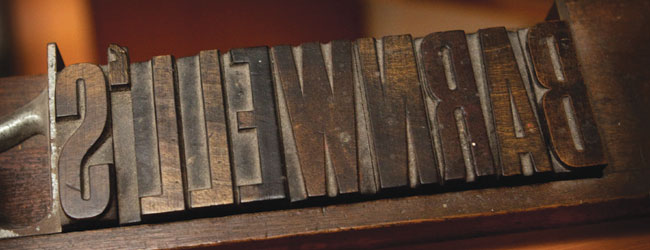
Still making an impression after four generations
Charles Clements (senior) born about 1794 in Suffield, had been a boot and shoe maker and established his business in the shop facing onto the Market Place. By 1839 the business also comprised of a bookseller and stationer. Charles Clements (junior) was a printer and book binder aged 30 in the 1851 census, joined his father and the family business went from strength to strength. The printing works was located above the shop. An advert for 1856 for Clements & Son, showed the range of goods, not only the printing and books but writing desks, tea chests, jewellery and fancy goods. The post office was also run from No33 1863-1892.
The Barnwell family arrives in Norfolk. In 1908 Clements & Son business came up for sale which included a commercial property in Aylsham, which was bought by Charles Henry Barnwell a printer from Hull, Thus began a family business which has remained in Aylsham and in the hands of the Barnwell Family ever since. Charles’s business began using the image of a sailing ship as the company logo which still remains to this day.
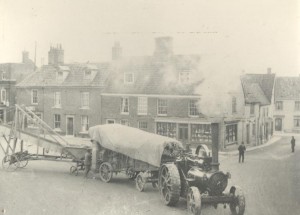
Charles married a local girl, who looked after the shop while he organised the printing. Mrs Barnwell proved a good business woman and negotiated some shrewd property deals. The couple were able to hand on a thriving concern to their son Frederick Charles; he, like his father, concentrated on running the print works, while his wife’s sister Winnie Jordon managed the shop until she was well into her seventies. Winnie was 97 at the time of writing.
Frederick was strictly a Letterpress printer, with hand-fed machines. Working hours were 8.00 a.m. to 5.30 p.m. on weekdays and 8.00 a.m. to 12.00 noon on Saturdays.
Barnwells issued invoices every quarter, and prices remained identical from one quarter to the next – life was much simpler before inflation!
The post-war era Fathers were more autocratic in those days. When Frederick’s 15-year-old son Michael started work in 1952, he was given responsibility for delivering newspapers, folding the advertisement sheets that the firm printed for the Church magazine, and little else; his father was in no hurry to let his son in on the secrets of the trade. Consequently when Frederick suffered a stroke at the age of 79, Michael was scarcely ready to take over the company.
Nevertheless, Michael set about re-organising the business and implemented many changes, beginning with a thorough tidy up. Determined to move on, he sold a lot of old magazines and two Albion presses to make room for new equipment, and then purchased an auto-fed Heidelberg Platen. As it was clear that litho printing was to be the way forward, he also invested in another Heidelberg press, and soon the firm was producing quality printing again. He also undertook his own binding, previously done in Norwich. His wife Linda, whom he married in 1966, took over this operation. She carried out the collating from home, the finishing at Aylsham and many of the deliveries. All this was done whilst bringing up two small boys, and without payment, thus helping to build the family business.
Expansion during the 1970s Space rapidly ran out and in 1974 Michael purchased the old Co-operative building just around the corner. This was to be the new home of the printing works.
Unfortunately on a cold and frosty night in December 22nd 1982, when Michael and a colleague were working late, an old heater overheated and set fire to the roof. Sparks from the roof set fire to the paper on the floor, and although the fire brigade arrived within minutes a considerable amount of damage was done. Undaunted, Michael hired a trailer and with his staff, his wife and his two sons, Julian and Lincoln, cleared out the premises.
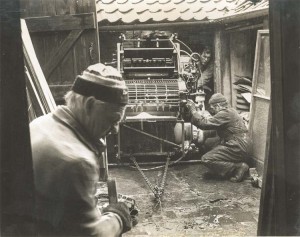
Such were their efforts and those of the fire brigade that the printing works was up and running in a matter of days.
1984
Julian joined the business at the age of 16. Remembering his own early introduction to the trade, his father started him off stitching draw tickets and running a small Rotoprint press. Having finished college and his apprenticeship, Julian moved to Brighton. Armed with his City & Guilds certificate he started work there as a printer running multi-colour presses. He used this time to learn new skills, ideas and working methods.
1987
On leaving school Lincoln joined his father, mother and brother. His apprenticeship was spent on the presses and finishing equipment, and it soon became clear that he was technically minded and hard working. Lincoln also achieved his City & Guilds qualification and then set out with great enthusiasm to set the standards for the next generation.
A new generation In 1994 Julian and Lincoln purchased the business from Michael. A new generation at the helm meant more new ideas and investment throughout the factory: new presses, new bindery equipment, more staff and more work. Once again space was scarce; this led to what would turn out to be a two-year expansion programme.
Further expansion A derelict property adjacent to the printing works was purchased from the neighbouring Black Boys public house. Building industrial premises in the middle of a town, let alone a conservation area, was to be no simple task. However, after much negotiation between Barnwells and the planning and conservation departments, the local council agreed to the erection of a two-storey building, that would not only double the size of the printing works but would also add to and complement the character of the town itself. Such was the success of the completed building it received an Enhancement Award from the district council.
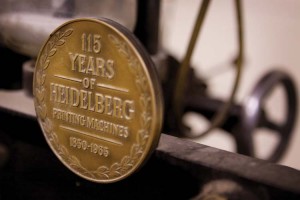
The new building was going to be in part home of the pre-press department. This was about to undergo the biggest single change Barnwell Printers had seen. Digital technology was upon them. The investment in this technology meant that Barnwells became completely self-sufficient in all its pre-press needs and was then able to meet the increasing demand for faster turnaround times and the wishes of customers to view finished work immediately. With the increased workflow came the need for even faster, larger presses.
2007
Today Barnwells, now Barnwell Print Limited, is committed to continue its investment in new technology and equipment to enable it to go on producing quality work, with fast turnaround times. Investment in machinery alone is not enough, investment in people has also always been important. It is not just the foundations laid by four generations, but also the loyalty, dedication and skills of all of their employees that ensure the future of the company.
2008
Barnwell Print Limited has now completed a one million pound expansion programme and has moved to a 15,000 sq ft factory on Aylsham industrial estate, ensuring that production runs smoothly, quality remains high and that staff enjoy a comfortable environment.
Acknowledging Mr William (Billy) A. Rackham
Retired after 60 years (started 1909) Mr William (Billy) A. Rackham of Pound Lane Aylsham, with the silver tray with which he was presented at a dinner on Wednesday week to mark his retirement after 60 years with F. C. Barnwell. stationers and printers, of the Market Place, Aylsham. He is pictured with his wife who was presented with a silver broach. 20 June 1969.
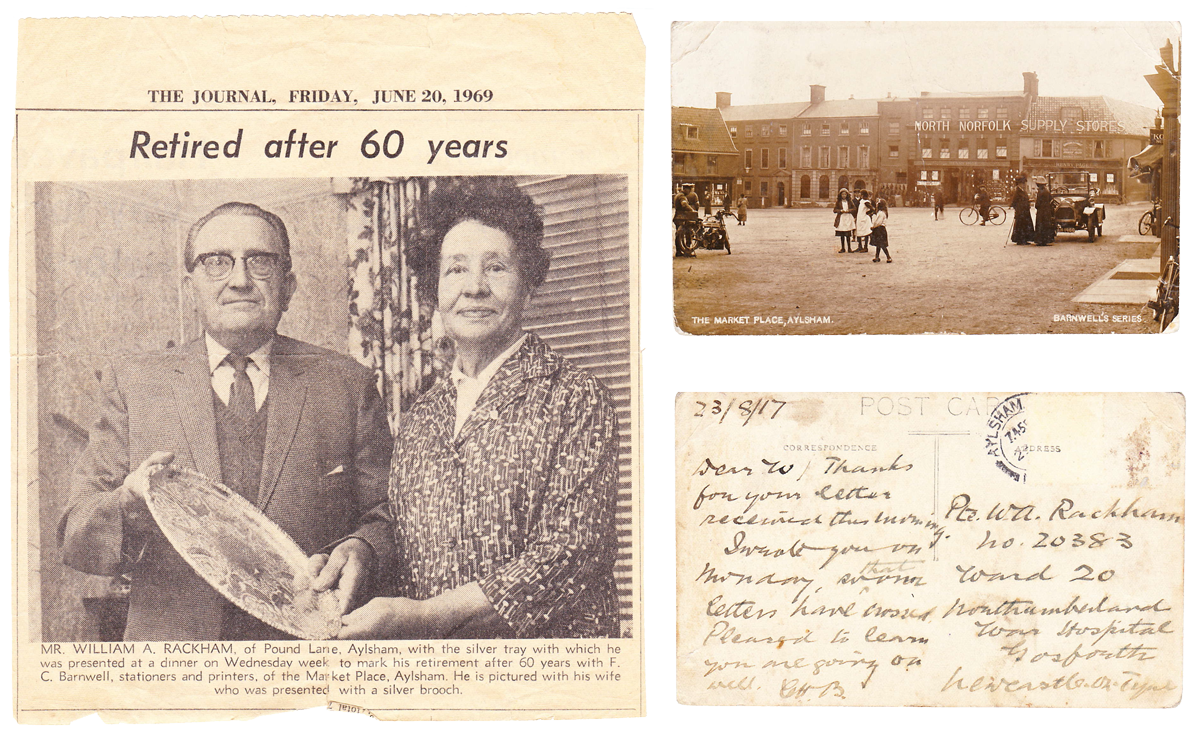
Postcard from C.H.B to Billy (23rd August 1917)
Dear Billy Thanks for your letter received this morning Write you on Monday, several letters have crossed. pleased to learn you are going on well C.H.B. 23rd August 1917 (WW1) Ward 20 Northumberland War Hospital Gosforth Newcastle on Tyne.
